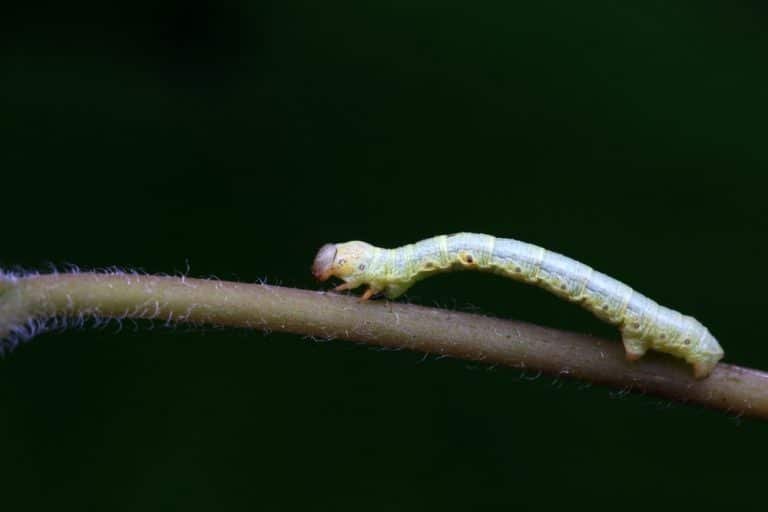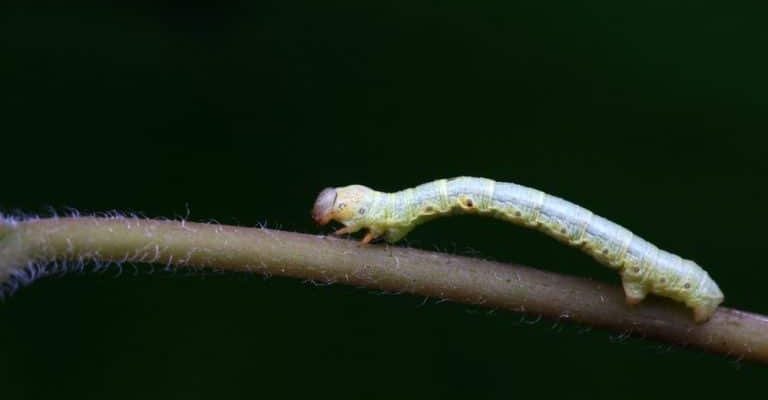
Just imagine a young inchworm, munching away on leaves, minding its own business. But at some point, this little creature gets a signal that it’s time for a big change. The process of pupation is where the magic happens—a transformative journey that’s both amazing and a bit complex. Let’s dive into the nitty-gritty of this unique life cycle stage, unraveling the steps inchworms take to evolve from their squirmy, green selves into something completely different.
What Is Pupation?
Pupation is a phase in the life cycle of many insects, including inchworms, which are actually the larval stage of moths. Think of it like a rite of passage. After spending time eating and growing, inchworms reach a point where they need to find a safe space to transform. During this time, they enter a dormant state, encased in a protective shell, often referred to as a pupa or chrysalis.
This stage is crucial because it’s when the inchworm’s body fundamentally changes. Inside that protective casing, the inchworm is undergoing dramatic changes, preparing to emerge as a fully formed moth. It’s like when we go through challenging times in our lives—sometimes we need to retreat and regroup before stepping out into the world anew.
How Do Inchworms Choose a Pupation Site?
Inchworms are quite selective about where they decide to pupate. They often look for a sheltered spot, like under a leaf or on the bark of a tree, to keep themselves safe from predators and environmental threats. It’s a bit like picking the perfect spot for a picnic—you want a place that feels secure, away from danger.
Once they find the right location, inchworms will often attach themselves using silk they produce. This silk is like a tiny safety net, holding them in place while they undergo such a significant transformation. It’s interesting to think about how much these little creatures have to consider before settling down for their pupation.
The Stages of Inchworm Pupation
The pupation process generally goes through several stages, which can be broken down into key moments. First, once the inchworm secures itself to the chosen site, it begins to form a protective casing. This process can take a couple of days.
Next, the inchworm enters a state of dormancy. Inside the pupa, its body starts breaking down and reconfiguring—this can last anywhere from a few days to several weeks, depending on the species and environmental conditions. Finally, after this metamorphic period, the inchworm is ready to emerge as an adult moth. It tears open its casing and struggles free, unfolding its new wings, ready to take flight.
This entire transformation is so similar to our own growth processes. Just as we sometimes go through periods of change and discomfort, inchworms embrace this metamorphosis, ultimately leading to a beautiful new chapter in their lives.
Environmental Factors Affecting Pupation
Like many parts of nature, the pupation process of inchworms is influenced by environmental factors. Temperature, humidity, and food availability all play significant roles. For instance, inchworms thrive in a mild climate. Too much heat can speed up their development but might lead to stunted growth if conditions are harsh.
Humidity is also crucial. A dryer environment may cause the casing to dry out quickly, leading to complications during pupation. On the other hand, sufficient moisture can support their transformation, just like how we need a balanced environment to grow and thrive.
Food availability is another factor. If food is scarce, you might find that inchworms pupate sooner than expected, trying to escape the lack of resources. It’s a fascinating reminder of how interconnected life can be, where every change affects the next stage of existence.
The Importance of the Pupation Process
Understanding the pupation process of inchworms is more than just an interesting fact about nature. It highlights a critical part of an ecosystem, helping maintain the balance of life. Inchworms play a vital role in the food chain, serving as prey for various birds, mammals, and other insects.
Moreover, the transformation of inchworms into moths contributes to pollination and biodiversity. Moths help pollinate plants just like butterflies do, supporting the growth of flowering plants and crops. So, when you think about inchworms, remember that their pupation isn’t just about their survival; it’s about how they fit into the broader picture of our environment.
Challenges During Pupation
While pupation may sound like a peaceful time of transformation, it’s not without challenges. Predators, environmental stressors, and diseases can threaten the safety of inchworms during this vulnerable stage. For example, birds might spot them easily when they’re hanging on a branch, or harsh weather could dislodge them unexpectedly.
Additionally, if the conditions aren’t right, the process may not go as planned. Some inchworms might struggle to break free from their casing or even fail to survive the metamorphosis due to stressors in their environment. It’s a tough reality, but it’s all part of nature’s cycle.
By understanding these challenges, we can appreciate the resilience of inchworms and other insects even more. It emphasizes the fragility and strength of life, reminding us of the beauty and complexity found in nature.
As we’ve explored, the pupation process of inchworms is a captivating journey filled with change, challenges, and growth. It’s a natural wonder that reminds us of our transformations. Just like inchworms must find safe spaces and undergo profound changes, we each experience moments that require us to pause, reflect, and evolve.
Learning about these processes not only deepens our appreciation for these tiny creatures but also ties us more closely to the world around us. The next time you see an inchworm, take a moment to think about its journey. It’s not just a little critter inching along—it’s a marvelous example of nature’s power to change and adapt.

